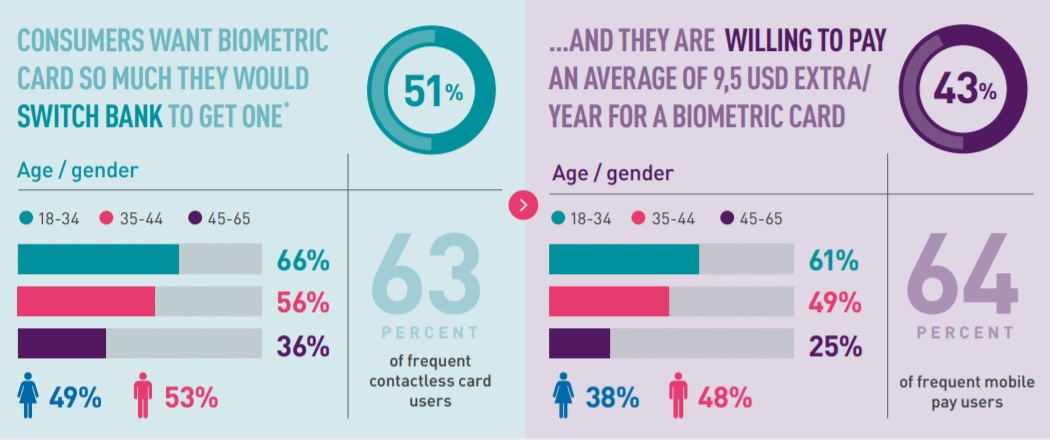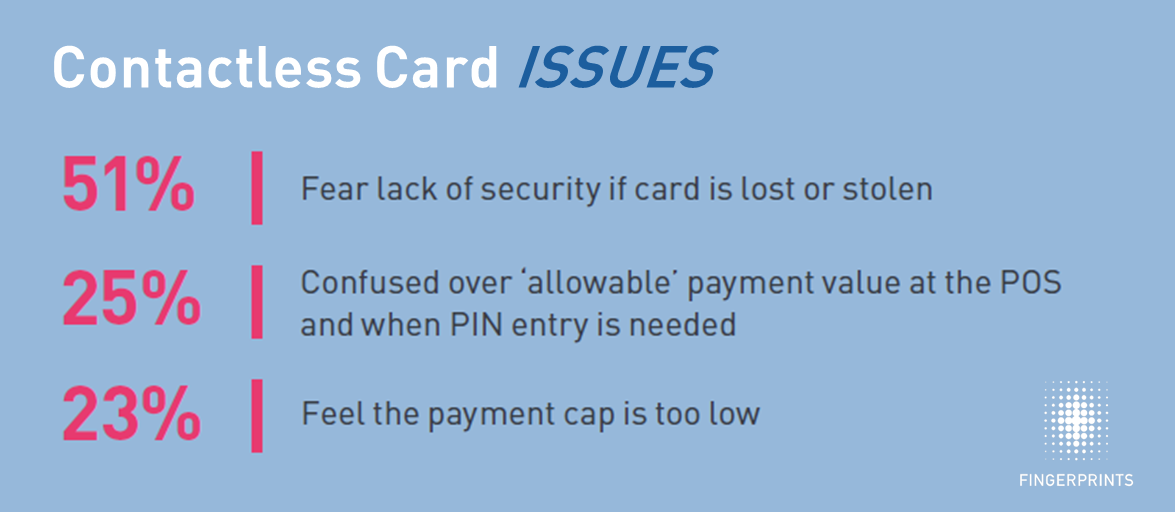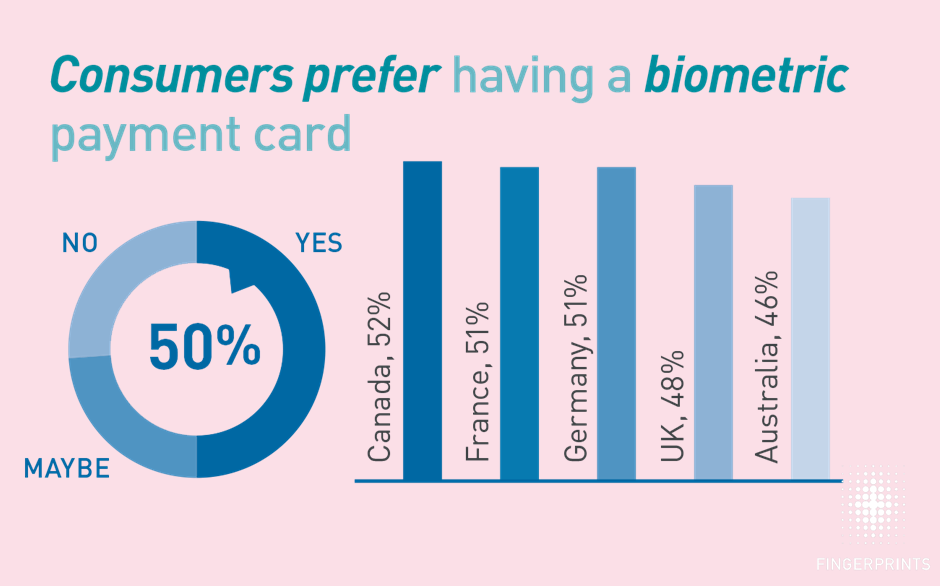
“PIN codes have been annoying for a long time, but who would have thought a year ago that one in three consumers would fear touching the PIN-pad when paying in-store?” comments Lina Andolf-Orup, Head of Marketing at Fingerprints.
Nevertheless, today that is the ‘new normal’ and the PIN-pad concern now equals concern levels around handling cash due to fear of contracting viruses, according to a new global study by Fingerprints and conducted by Kantar across five global markets1.
The need for safer and more touchless ways to pay has escalated and consumers are embracing contactless cards as the preferred means of payment, with 77% using them regularly in-store. However, in parallel with the increased use of contactless are rising security and usability concerns.
The pandemic has rapidly changed the way we pay and our attitudes towards how we want to pay in the future.
The need for safe and touchless ways to pay has risen
Consumers have continued to move away from using cash (22%), and the bank card is now the dominant way consumers make in-store payments (73%), with very few claiming to use mobile wallets (2%).
On average, one in two are using their contactless card as the main method when paying in stores. France (60%) and the UK (57%) are the countries with the highest penetration, but contactless has also gained adoption in the famously cash-heavy Germany (38%). The contactless card is also used frequently, with over three quarters (77%) using it at least weekly.
The majority of consumers (63%) think they will use contactless cards even more in future. Mobile payments will likely grow too but is a polarized method, with one in four thinking they will use it more than today, but 32% still think they won’t make mobile payments at all in-store in future. There are some differences across markets and segments, but the overall picture remains consistent that consumer usage and fondness for contactless cards is here to stay.
Consumers need a reason to trust contactless
The main reason for consumers’ affection for the card is trust – it is easy to use (78%), it works everywhere (70%), it is secure (68%) – and of course, it can work as a complement to your smartphone, especially for online payments. For ‘real life’, in-store payments however, very few think mobile first.
“The contactless card is far from perfect, however. Consumers are worried around its security, and this level of concern has risen since our earlier research, likely fuelled by growing usage and raised payment caps. People are aware and increasingly concerned about anyone being able to use their card if they lose it. On the other hand, there is also an issue with the transaction cap and confusion caused by still often needing to input your PIN – an unwelcome step not only because of hygiene concerns, but as an added point of friction. Consumers truly need a reason to trust contactless, both from a security and usability point of view,” adds Lina.

The biometric payment card = the answer to consumer needs
Biometric payment cards, where you authenticate yourself with your fingerprint on the card instead of entering a PIN code, is a desirable innovation when you ask consumers. It will enable secure, hygienic, convenient contactless payments no matter the amount and also offers consumers a ‘wow’ factor with a technology that’s still somewhat familiar, with many now comfortable with biometrics from use in smartphones. Biometric payment cards directly address consumer needs and concerns, both rational and emotional.
Half of all consumers want a biometric payment card, with a further quarter being open to it.
In fact, they want it so much that over half (51%) would switch bank if they could have one. In Australia and the UK, the interest is even higher, with over six in ten willing to switch bank. And, among the 18-35-year olds, the willingness to switch is the highest (66%), followed by those with higher income (61%).
Beyond this, a significant proportion (43%) would also be willing to pay extra to have the fingerprint feature on their card. This differs across segments, with younger demographics wanting it to a higher degree (55%) and willing to pay for it (61%). Among the consumers that use their contactless cards regularly, 62% want it to be biometric and almost half would be willing to pay for it (49%).
In the two countries included in the earlier survey, conducted ‘pre-Covid’ at the end of 2019, the interest in having a biometric payment card has since increased too, with around half of consumers now citing it as a preference in France (51%) and the UK (48%).

“From our research, it is clear demand for biometric cards has only increased with the pandemic. Behaviors have shifted quickly and adoption of contactless cards has boomed, penetrating new markets and segments while also shining a spotlight on the current issues and constraints of contactless that have now become real consumer pain-points. Banks have an opportunity to bring innovation to consumers’ favorite payment form factor. By offering biometric payment cards, banks can not only show they care for their existing customers, they can also attract new customers and create a potential new revenue stream,” Lina added.
For more details download the global report here here.
###
1 Survey Methodology
Fingerprints commissioned research carried out by Kantar during September-October 2020 among 2,000 adults age 18-65 years old, national representative samples in each country. Online interviews were conducted across: Australia, Germany, France, Canada, the UK.
This is a survey that looks at people’s attitudes, the percentages reflect the perceived use and not based on actual usage statistics.
___________
Fingerprint Cards AB (Fingerprints) – the world’s leading biometrics company, with its roots in Sweden. Company’s solutions are found in hundreds of millions of devices and applications, and are used billions of times every day, providing safe and convenient identification and authentication with a human touch.
Banking 4.0 – „how was the experience for you”
„To be honest I think that Sinaia, your conference, is much better then Davos.”
Many more interesting quotes in the video below: